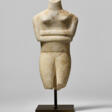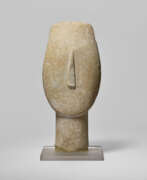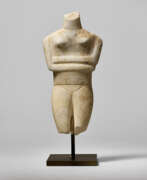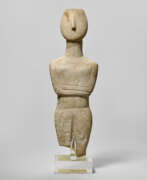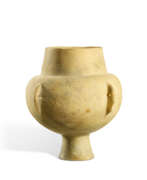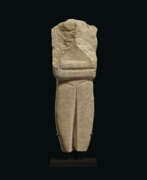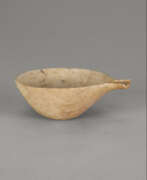Cycladic civilisation
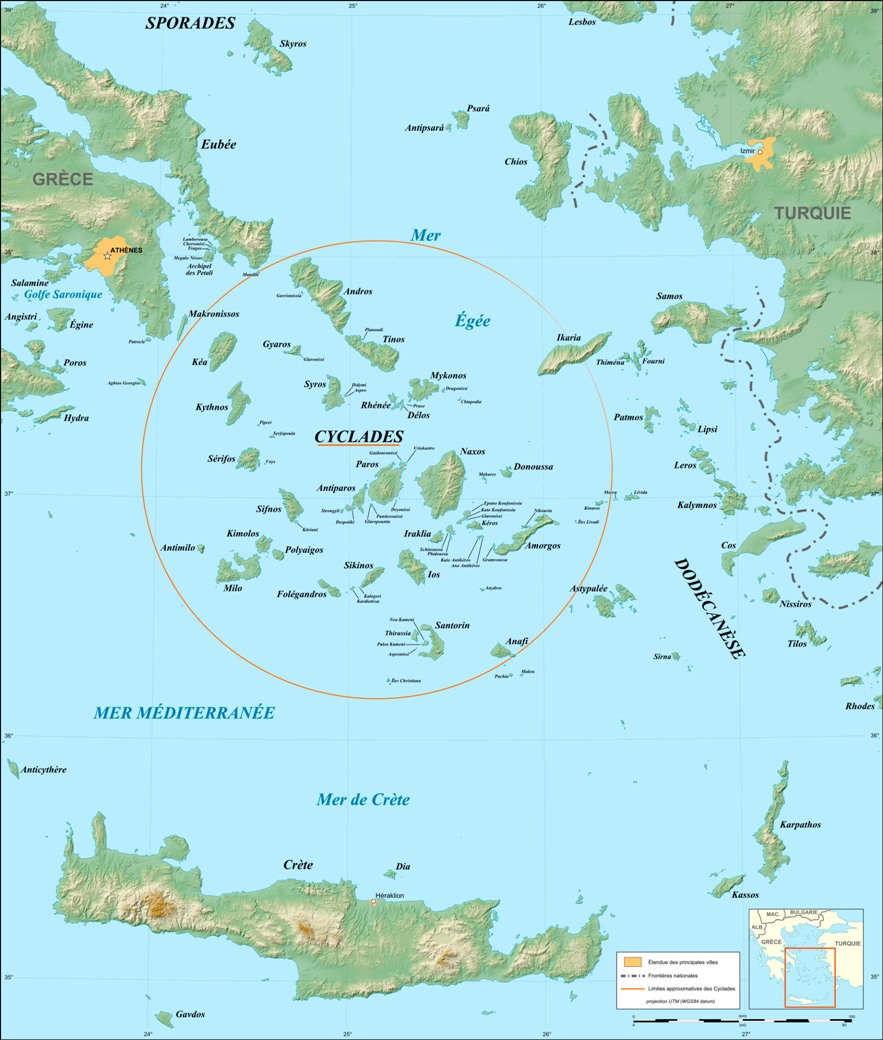
Cycladic civilisation
The Cycladic civilization, a culture that thrived on the Cyclades islands in the Aegean Sea from around 3000 to 2000 BC, is renowned for its distinctive art and cultural influence. This civilization underwent three phases: Early, Middle, and Late Cycladic, each marked by its own unique developments and contributions.
In the Early Cycladic period the Cycladic culture was heavily influenced by the civilizations of Crete and the Greek mainland. This period saw the emergence of unique pottery styles, with vases often decorated with spirals and other motifs, including primitive representations of ships. Notably, the Cycladic civilization had a significant impact on Knossos in Crete during this time.
The most striking artistic achievements of the Cycladic civilization are the marble figures, often mistakenly referred to as "idols" or "figurines." These sculptures, mainly female forms, display a flat, geometric quality and were often originally brightly painted. They're known for their stylized representations and the typical posture with arms folded across the stomach. These figures, which have been found in graves, have sparked various interpretations regarding their purpose and significance, ranging from religious icons to mere decorative items.
During the Middle and Late Bronze Age, the Cycladic culture continued to evolve, showing geographical shifts and an expansion of influence, including on the Greek mainland and Crete. Pottery remained a significant artifact for understanding this period, with changes in styles helping to date various phases of Cycladic history.
Historically, the Cycladic islands played an important role during the 5th century BCE, particularly during the Persian Wars. Islands like Naxos participated in the battles of Salamis and Plataea and were key members of the Delian League. The Cycladic islands' strategic and cultural importance continued through the Hellenistic and Roman periods, though they faced challenges like piracy.
For art collectors and antiquities experts, understanding the Cycladic civilization is vital for appreciating the origins of Greek art and culture. If you are keen to stay informed about sales and auction events related to Cycladic artifacts, consider subscribing to our updates. This subscription will ensure you are always in the know about new opportunities to explore and acquire pieces from this intriguing period of ancient Aegean history.
| Country: | Ancient Greece, Europe |
|---|---|
| Start of the period: | 3000 BC |
| End of the period: | 2000 BC |
